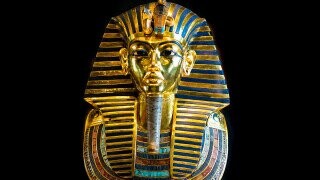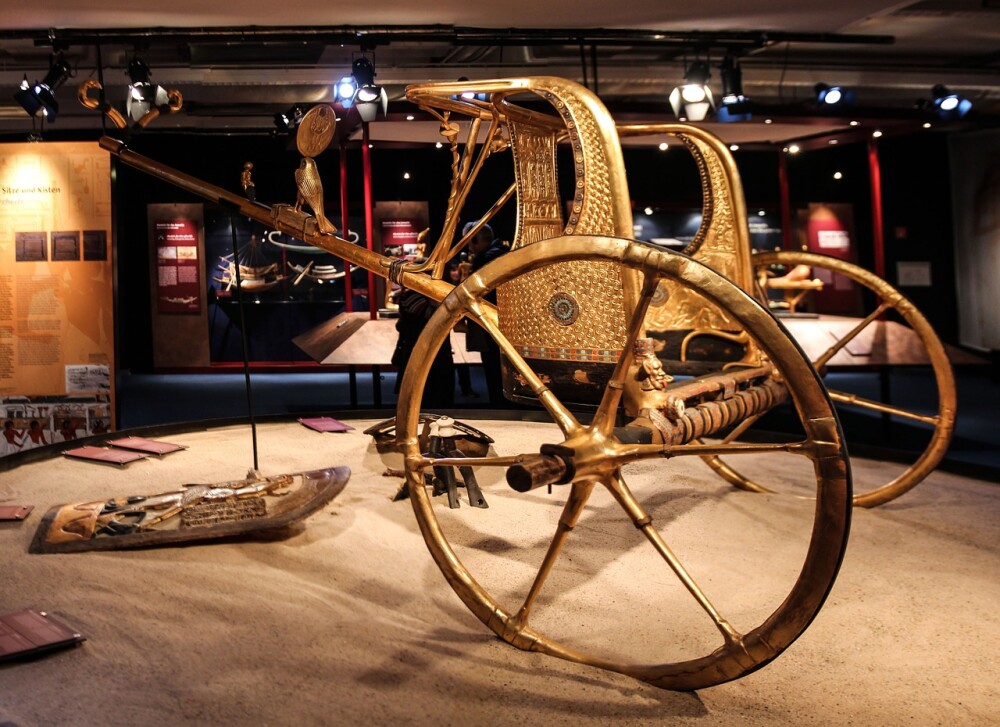The Crazy Coincidence(s) That Made King Tut Famous

King Tut is the most famous Egyptian pharaoh of all time, but it's through no doing of his own because Tutankhamun isn't famous for any pharaonic achievements, be they architectural, political, or militaristic. Unlike Egypt's more accomplished emperors of lesser renown, Tut didn't commission any grand temples, imposing fortifications, or even an obelisk to euphemize his virility and penile might. He wasn't a Machiavellian wheeler-and-dealer who puppeteered significant political movements. And he didn't claim any military victories or unite vast swathes of desert into one nation.
Though, to be fair, it's not really his fault. The boy-king became pharaoh at just nine years old, only ruling for about 10 years before dying at 19, spending his entire life and reign dealing with disease and deformity. So Tut owes his fame and pop culture immortality to the seemingly unplundered condition of his tomb when Howard Carter unsealed it in 1922 — which says a lot about the efficacy of ancient looters. The vast majority of other burial sites are comprehensively plundered, but Tut's burial site held 5,000 artifacts, including a chariot for raising hell in the afterlife.

But, again, to the credit of ancient looters (these guys were really good), even Tut's untouched tomb was touched. Twice. It was first desecrated soon after the burial (circa 1323 BCE), when robbers treated their former pharaoh's sepulcher like a subterranean Bed Bath & Beyond, helping themselves to the perishable oils, perfumes, and cosmetics.
Don't Miss
A second team of robbers struck soon afterward and took many, possibly half or more, of the jewels and precious metals before they were mysteriously and pre-maturely interrupted. So, luckily, the tomb still held a stupendous variety of riches for rowdy 20th-century archaeologists to gawk at and secretly pocket for their bonneted, fainting-couch-reclining society ladies back home:
The fact that no other marauders returned for further looting was due to chance and coincidence. First, Tut's tomb is situated between the much fancier, more significant burial sites of Ramses II and Ramses IV. Additionally, Tut's more humble abode lay hidden beneath many feet of rock and rubble due (again) to its fortunate position and some serendipitous geological happenstance: a landslide from the upper reaches of the Valley of the Kings covered it up and concealed its remaining treasures for thousands of years.
This whole scenario highlights a cruel, self-inflicted twist of fate for Egypt's pharaohs and VIPs. They were interred among immense golden splendor to ensure themselves ethereal immortality—the afterlife is like a midscale club: you're not getting in with scuffed Jordans. But, these lavish death rites inspired mass grave-robbing and destruction of the mummies to get at the jewels stuffed within their wrappings.
This unhallowing of sacred rites, and the devastation of the body, would knock the emperors' ass right out the afterlife, like some common papyrus-cutter or manure-collector.
Top Image: Mark Fischer